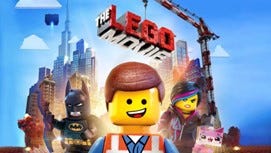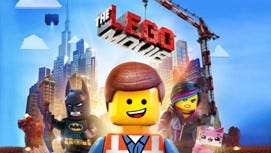For this Christmas edition of “Nowhere?: Lessons from Utopia and Dystopia,” I offer something a little different: a movie that you might not at first consider a dystopian film. In fact, it is a very entertaining movie that the whole family can watch. Beneath this amusing façade, however, it does address some serious issues. Since I owe my own familiarity with the world of Lego to the many sets I have bought as Christmas gifts over the years, I thought it would be most appropriate to offer this analysis of The Lego Movie during this festive season and leave more serious literature and film for the new year.
One of the worst “earworms” of all time—a song that you just can’t get out of your head—is the theme song to The Lego Movie, “Everything Is Awesome!”:
Everything is awesome!
Everything is cool when you’re part of a team.
Everything is awesome
When you’re living a dream!
The irony of this song is that everything is far from awesome in the dystopian society portrayed in this movie. In reality, the world depicted in this seemingly innocuous film is a nightmare about collectivism and tyranny. It portrays a place that is reminiscent of Alduous Huxley’s Brave New World in which all the characters are brainwashed into thinking that they are happy all the time. In such a world, tyrants can easily gain and maintain their power without fear of rebellion.
As the film begins, the evil antagonist “Lord Business” is revealed to be the wannabe tyrant. He pursues power above all else and is armed with a secret weapon called “Kragle” which will enable him to control the universe. The prophet Vitruvius, however, foretells the coming of a “master builder” who will possess the counter-weapon (referred to as “the piece of resistance”) that can stop Lord Business.
Following this prologue, Emmet Brickowski is introduced, a seemingly happy construction worker despite his lack of any meaningful relationships or unique purpose. Although he will ultimately fulfill the prophecy revealed in the prologue as the “special one with face of yellow” and the “master builder” who will save the universe, his co-workers don’t consider him particularly special. The viewer is left wondering how this average character who, like his co-workers, follows the instructions “to fit in, have everyone like you, and always be happy” will ever fulfill the prophecy. Like most of the residents of Bricksburg, Emmet spends his free time watching mindless entertainment like an inane show called Where Are My Pants? He is so distracted by President Business’ announcement about free food on “Taco Tuesday” that he cannot hear the subliminal message that he will be “put to sleep” if he does not follow instructions.
The ruler of Bricksburg is subtly portrayed as a “Big Brother” type of character as a billboard with his picture also features the caption, “I’ve got my eye on you!” This Lego world is revealed to be nothing more than an authoritarian state in which the monopolistic corporation Octan run by President Business himself provides just about everything from coffee and dairy products to surveillance systems. This Amazon-like conglomerate also controls the media which produces such drivel as the aforementioned Where Are My Pants? As if foreshadowing election controversies a half dozen years in the future, Octan also produces voting machines. When Emmet goes to work, all the builders follow the mandate to “make it look exactly like it does in the instructions.” A strong emphasis is placed on following the rules and working as a mere cog in a collectivist machine with no creativity or individuality.
The antithesis of such a cog is the “master builder,” the one who actually designs the instructions. In The Lego Movie, such master builders are seen as renegades who live outside the city. The concept of a master builder is philosophically quite significant because it hearkens back to an idea that Plato put forth in his famous “Theory of Forms” which was explained in that masterpiece of utopian literature, The Republic (see my first substack article for a detailed analysis of this book). This theory conveys the necessity of a “master” who creates a perfect “form” to be followed by others. So, the idea of a “master builder” predates Lego by almost 2500 years!
Speaking of Plato, The Lego Movie also features a number of allusions to his “Allegory of the Cave.” The first ironically involves Emmet actually descending in a tunnel, but this life-changing event thrusts him into the role foreseen by Vitruvius to save the universe. It is in this underground environment that Emmet finds the “piece of resistance” that will allow him to defeat Lord Business. As if temporarily blinded like the prisoner who escapes into the sunlight in Plato’s allegory, however, he asks, “What do I do? I don’t have my instructions!” In order to fulfill the prophecy, he must learn to be independent and work without instructions, following the advice of Vitruvius: “Don’t worry about what the others are doing; you must embrace what is special about you!”
Emmet’s epiphany is also conveyed when he and the female protagonist Wyldstyle escape Bricksburg and emerge in the desert where the prophet Vitruvius explains how all people used to be free to travel and build what they wanted until Lord Business took away their freedom in his quest for absolute power. Where Emmet most clearly emerges from the metaphorical cave is when he is thrust into the three-dimensional world of live-action human beings who ironically are in the basement of their house. This segment of the movie mildly shocks viewers out of their own complacency as they are thrust into a real-world setting, and they come to realize that all the action up until this point has taken place in the imagination of a boy named Finn whose dad is obviously the inspiration for the character of Lord/President Business, a micromanager who wants everything to be perfect. The basement is full of the father’s Lego creations covered with “Do Not Touch!” signs. As he admonishes his son for playing with the intricately planned Lego city, it becomes quite clear that Lord Business’ secret weapon Kra-- Gl-e is actually just a tube of “Krazy Glue,” the substance that the control-freak dad uses to fuse the pieces of Lego together so that his son cannot rearrange them into something else. This amusing live-action scene which portrays a mildly dysfunctional family should not dilute from the film’s broader political message concerning the evils of collectivism and tyranny but instead help us understand this threat better.
Lord Business, like any evil tyrant, wants to create his own vision of utopia, but as dystopian literature and films have repeatedly shown, utopia is an elusive concept. The closest we get to seeing a true utopia in The Lego Movie is in the depiction of “Cloud Cuckoo Land” which has no rules, no signs, no government, and no negativity. Only happy ideas are allowed there, and ultimately it is destroyed because it is impossible to maintain such a society.
In the meaningless world portrayed in The Lego Movie, no true value is placed on anything. As described in the lyrics from the other verses of the catchy theme song, a Nobel Prize is no better than a piece of string; a dog “with fleas, allergies” is just as good as “a book of Greek antiquities”; winning is equal to losing (“It's awesome to win and it's awesome to lose”); there is nothing special about anyone (“We're the same, I'm like you, you're like me”). In this dystopian Lego world, residents are brainwashed into thinking that “Everything you see or think or say is awesome” when in fact, the opposite is true. In the end, the only way to destroy the dystopia of the Lego universe is to disregard the instructions. Only then can anything truly be awesome.




